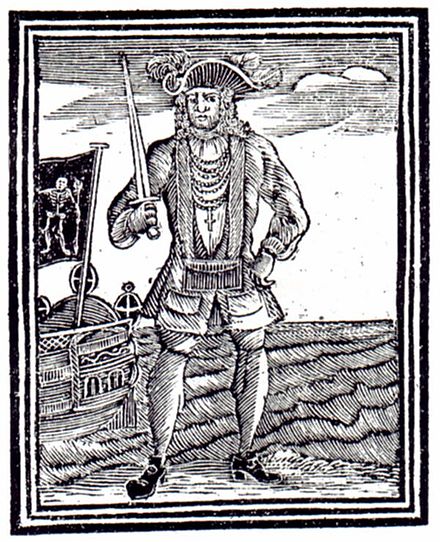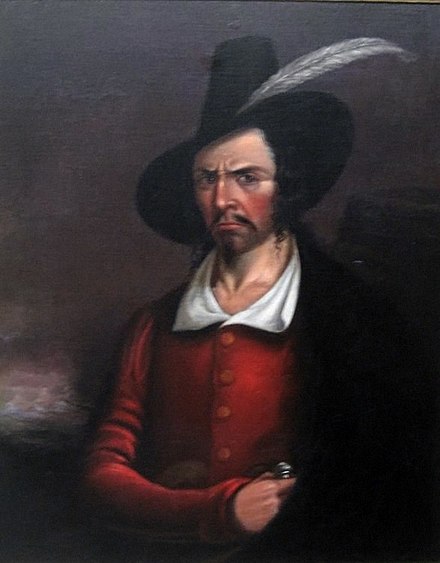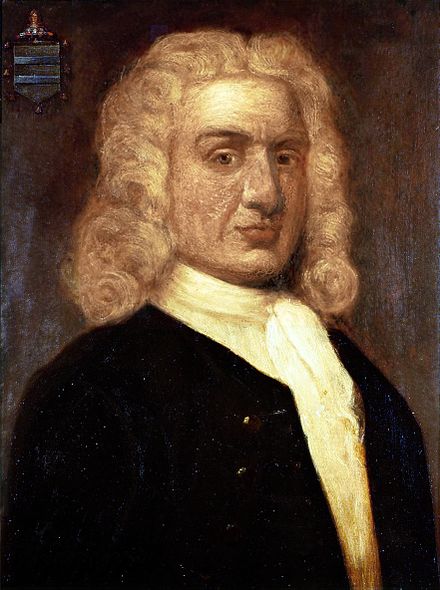Tristan’s book incorporates plenty of famous historical figures that you might not have expected to be real. We decided to make an encyclopedia of all these characters for those interested in the real history in the book.
Captain Black Bart (John Roberts)

Born: 1682, Pembrokeshire, Wales
Died: February 10, 1722, off the coast of West Africa
Notoriety: One of the most successful pirates of the Golden Age of Piracy.
Career: Roberts captured over 400 ships during his pirate career, making him one of the most prolific pirates in history.
Appearance: Known for his flamboyant style, he often wore fine clothes, including a crimson waistcoat and feathered hat.
Flag: His Jolly Roger featured a figure of him holding an hourglass, symbolizing the fleeting nature of life.
Death: Killed in battle with the Royal Navy’s HMS Swallow. His crew buried his body at sea to prevent capture.
Legacy: Roberts’ code of conduct influenced later pirate lore, and he was considered a charismatic yet ruthless leader.
More Info Available Here →
Edward England (Edward Seegar)
Born: Late 1600s, Ireland
Died: 1721, Madagascar
Notoriety: Known for his democratic leadership and relative leniency compared to other pirates.
Career: Active during the Golden Age of Piracy, England operated in the Indian Ocean and along the African coast, capturing several notable prizes, including the Fancy.
Flag: His Jolly Roger featured a skull above two crossed bones on a black background, one of the iconic pirate flags.
Downfall: His leniency angered his crew, and he was marooned on Mauritius. He later made his way to Madagascar, where he died in poverty.

Famous Exploits:
Captured the British ship Cassandra after a fierce battle near India.
Spared the life of Captain James Macrae, an act that ultimately led to dissent among his crew.
Legacy: Remembered as a pirate who balanced ruthlessness with occasional mercy, setting him apart from his more brutal contemporaries.
More Info Available Here →
Captain Henry Avery

Aliases: Henry Every, Long Ben
Born: August 20, 1659 (likely), Devon, England
Died: Unknown (possibly around 1696, fate remains a mystery)
Notoriety: Dubbed the “King of the Pirates,” he became one of the most famous pirates of the late 17th century due to his immense wealth and mysterious disappearance.
Career:
Started as a sailor before turning pirate around 1694.
Operated in the Atlantic and Indian Oceans, targeting Mughal Empire treasure fleets.
Famous Exploit: Capture of the Ganj-i-Sawai: In 1695, Avery and his crew seized the Mughal ship, which carried immense wealth. This heist is considered one of the richest in pirate history, yielding treasures worth millions today.
Flag: Likely a plain black flag or a skull with crossed swords.
Downfall: After dividing the loot, Avery vanished. Some say he retired wealthy; others claim he died poor after being swindled.
Legacy:
Became the subject of ballads and folklore, cementing his legendary status.
Inspired future pirates with his daring and riches.
More Info Available Here →
Captain Peter Easton

Born: 1570, England
Died: Around 1620, Savoy (modern-day Italy)
Notoriety: A successful English privateer turned pirate, Easton was one of the most powerful and wealthy pirates of his time.
Career:
Initially a privateer under Queen Elizabeth I, authorized to attack Spanish ships.
After losing his privateering commission, he turned to piracy, operating primarily in the North Atlantic, targeting ships near Newfoundland and the English Channel.
Famous Exploits:
Built a pirate empire in Newfoundland, establishing control over harbors and extorting local fishermen.
Amassed immense wealth by capturing Spanish treasure ships and raiding settlements.
Commanded a fleet of up to 10 ships and over 1,500 men at his peak.
Downfall:
Retired from piracy around 1614, accepting a pardon from the Duke of Savoy.
Lived out his life in luxury in Savoy, avoiding the violent fates of many of his contemporaries.
Legacy:
Remembered as a highly strategic pirate who amassed significant power and wealth without meeting a tragic end, making him unique among pirates of the era.
More Info Available Here →
Captain Jean Lafitte

Born: Around 1780, possibly in France or Saint-Domingue (now Haiti)
Died: Around 1823 (fate uncertain, though some legends say later)
Notoriety: A famous privateer and pirate who operated primarily in the Gulf of Mexico. Known for his cunning business sense and for aiding the U.S. during the War of 1812.
Career:
Ran a successful smuggling operation from Barataria Bay, Louisiana.
His fleet of privateers targeted Spanish ships, making him wealthy and influential in the region.
Played a key role in the Battle of New Orleans (1815) by supplying Andrew Jackson with weapons and men in exchange for a pardon.
Famous Exploits:
Defied Governor Claiborne of Louisiana by refusing to disband his pirate operations.
Escaped a naval assault on Barataria in 1814 and continued his operations elsewhere.
Later established a pirate colony on Galveston Island, Texas, called “Campeche.”
Downfall:
His operations were eventually shut down by U.S. forces.
He reportedly died in the 1820s, possibly in battle near Central America, though his death is shrouded in mystery.
Legacy:
Lafitte is celebrated as a folk hero in Louisiana for his adventurous life and contributions to the War of 1812.
His name lives on in stories, landmarks, and festivals, embodying the romanticized image of a pirate.
More Info Available Here →
Captain Joseph Bannister

Born: Unknown, likely in England
Died: 1687, near Port Royal, Jamaica
Notoriety: A former English merchant captain who turned to piracy, renowned for his daring escapes and battles with the Royal Navy.
Career:
Originally a respected merchant and captain of the ship Golden Fleece.
Turned pirate in the 1680s after stealing the Golden Fleece and its cargo.
Operated in the Caribbean, targeting merchant ships and evading capture by the English authorities.
Famous Exploits:
In 1686, he audaciously captured and fortified a small island near Hispaniola to resist the Royal Navy.
Successfully fended off two English warships, the Falcon and the Drake, in a legendary battle, showcasing his tactical brilliance.
Downfall:
Bannister was eventually captured by the Royal Navy in 1687.
Tried and hanged for piracy near Port Royal, Jamaica, his body was displayed as a warning to other pirates.
Legacy:
Remembered as one of the few pirates who stood toe-to-toe with the Royal Navy and lived to fight another day—at least for a while.
His defiance and naval skill have cemented his status as a legendary figure in pirate lore.
More Info Available Here →
Captain William Kidd

Born: January 22, 1645, Dundee, Scotland
Died: May 23, 1701, London, England
Notoriety: Once a respected privateer, William Kidd’s transition to piracy and controversial trial made him one of history’s most infamous pirates.
Career:
Began as a privateer, licensed by the English government to attack enemy ships during wartime.
In 1696, he was commissioned by a group of wealthy backers, including prominent English politicians, to hunt pirates and attack French vessels.
Commanded the ship Adventure Galley, armed with 34 guns and a skilled crew.
Famous Exploits:
Kidd’s reputation changed when he captured the Quedagh Merchant, an Armenian ship carrying valuable goods, under suspicious circumstances.
This act was later deemed piracy, as the ship was under the protection of the East India Company.
Accused of turning pirate himself, Kidd sailed to the Caribbean, attempting to clear his name.
Downfall:
Returned to New York in 1699, believing his connections would shield him.
Arrested and sent to England for trial.
Despite protesting his innocence, Kidd was found guilty of piracy and murder.
Hanged in London in 1701, with his body later displayed in a gibbet as a warning to other pirates.
Legacy:
Kidd’s life is steeped in mystery, particularly the legend of his buried treasure, which inspired countless treasure hunts and stories.
Historians debate whether he was truly a pirate or a scapegoat for political interests.
He remains one of the most famous figures of the Golden Age of Piracy
More Info Available Here →